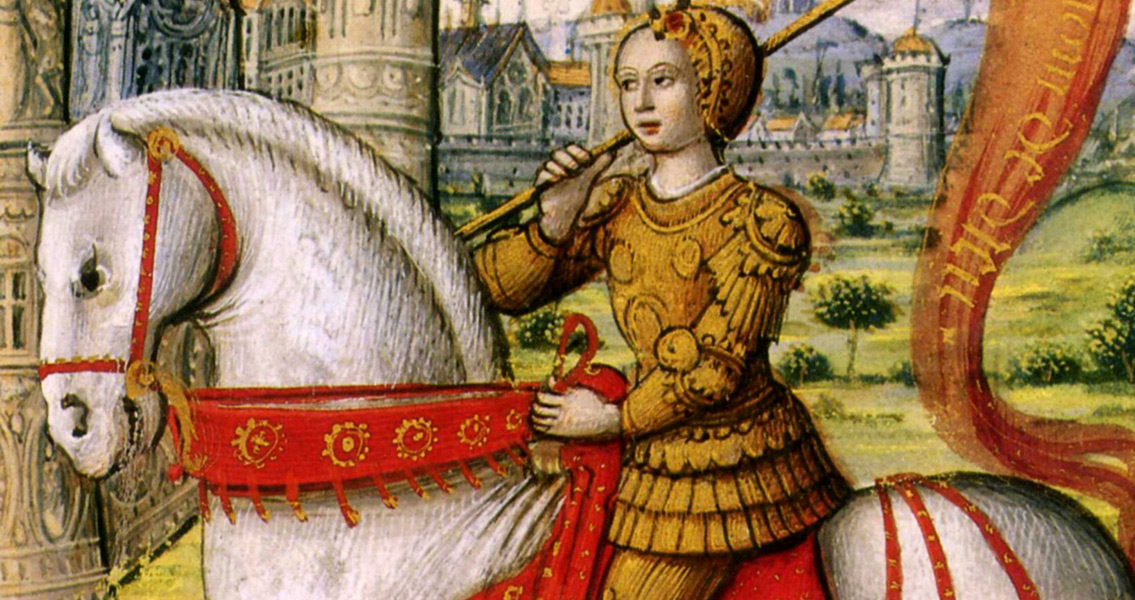<![CDATA[On 29th April, 1429, Joan of Arc led a French force to relieve the besieged city of Orleans. The event was Joan of Arc's first great military success, setting her on the path to sainthood and becoming a key figure in French history. At the time, the French crown was heavily disputed and France and England were firmly embroiled in the Hundred Years War. Northern France was occupied by an alliance of English forces and those of Phillip the Good, the Duke of Burgundy. The son and heir of the Valois king Charles VI, the Dauphin (crown prince) Charles VII, was left in southern France with seemingly little chance of overcoming the armies in the north. His cause was worsened by the fact that five years after his father's death he had yet to be crowned king, as the traditional site of coronation, Reims, was located in the occupied territory. Joan of Arc was born in the village of Domrémy, located on the frontier of the conflict between the Anglo-Burgundians and the Dauphin. A peasant girl, Joan claimed to be guided by the divine voices of St. Michael, St. Catherine and St. Margaret. In May 1427, aged just 16, she traveled to Vaucouleurs, a stronghold of support for the Dauphin, and asked the captain of the garrison for permission to fight for the Dauphin's cause. She was rejected by the captain, but two years later she applied again, and this time was allowed to go to the town of Chinon to meet Charles. Upon meeting the Dauphin, Joan declared that she would fight against the English, and vowed that Charles would be crowned in Reims. For three weeks she was investigated by ecclesiastical authorities and theologians to determine whether she was a heretic. The churchmen concluded she was of sound mind and that her claims were true, and Joan was given command of a small force of French soldiers. In March 1429, Joan set off for Orleans dressed in white armour and riding a white horse. The city had been under siege by English forces since October 1428, and by the time of Joan's arrival was almost completely surrounded. On April 29th, French troops launched an attack on the English troops defending the city's west gate. In the confusion, Joan entered Orleans' east gate, bringing much needed troops and supplies into the city. Joan became the leader of a passionate French resistance, launching a number of strikes on the English forces. On 8th May the siege was broken, and the English forces retreated. Over the next five weeks, Joan led the French forces in a series of triumphs over the English, dramatically changing the course of the war in favour of the Dauphin. In July, Joan's earlier promise to the king was fulfilled. Reims was captured, and Charles crowned. In May 1430, with the war still raging in France, Joan was captured following a Burgundian assault on the town of Compiégne. Joan was put on trial for witchcraft and heresy. Charles, fearing his association with an accused heretic could discredit him, made no attempt to negotiate Joan's release. In May 1431, a year after her capture, Joan signed a confession denying that she had ever received divine guidance. Nevertheless, she continued to defy the Anglo-Burgundians by wearing men's clothes, provoking them into issuing a death sentence. On the morning of the 30th May, aged 19, Joan of Arc was taken to the market place in Rouen and burned at the stake. Although not recognised as a Christian saint by the Church until 1920, Joan of Arc was already well established as a hero of French history, with art and literature commemorating her life being created almost from the moment she had died. A combination of piety, bravery and military brilliance allowed Joan of Arc to stand out at a point when French identity was in jeopardy as a result to the Hundred Years War.]]>
Joan Of Arc Saves Orleans
